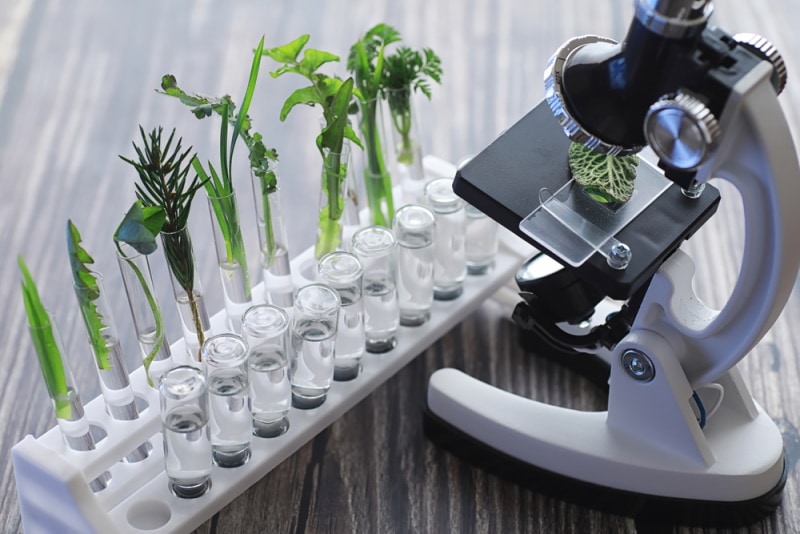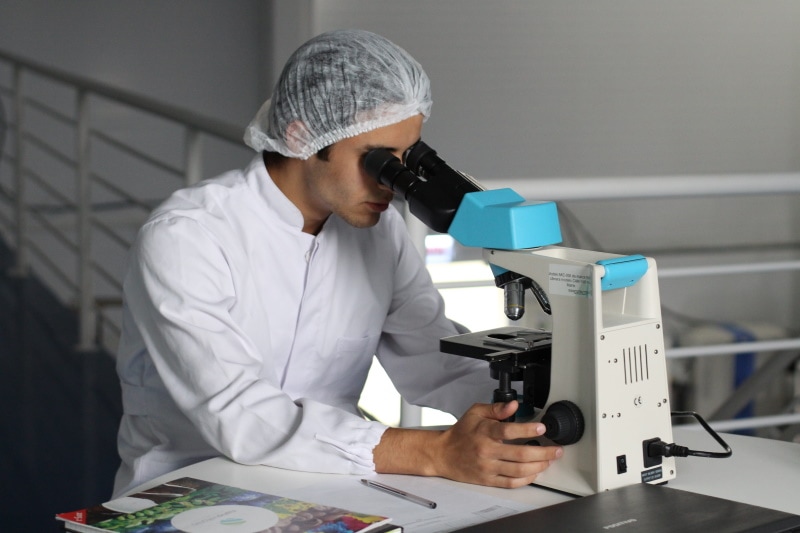What Does Grass Look Like Under a Microscope? (With Pictures!)
Last Updated on

In 2018, there was a sudden fascination with images of grass viewed through a microscope. A viral meme showed the image that appears to have smiley faces with the caption that the grass is always smiling at you. The image was real, although the smiley faces are actually vascular bundles, which help transport water to the top of the blade of grass. The same bundles can be seen in other monocots, which are plants that have single leaves. Palm trees and bananas are other examples of monocots.

What Does Grass Look Like Under a Microscope?
As previously mentioned, grass really does have a smiley-face feature when viewed under a microscope. Each of these “faces” are called vascular bundles. The vascular bundles sit inside sclerotic tissue beneath the upper epidermis of the grass.
https://www.instagram.com/p/CPY7PyaH3um/
Does Grass Have Microscopic Hairs?
When viewed under a microscope, you can see minute hairs underneath the blades of grass. In some people, these hairs can cause them to itch, and because the grass can also secrete a small amount of liquid into the cut, which combines with salty sweat, it can lead to serious itching in some sufferers.

Top 5 Facts About Grass
1. 2,5000 Square Feet of Grass Produces Enough Oxygen for a Whole Family
Grass is not only an attractive feature to have at the front and rear of houses, but it can also help prevent earth movement and landslides. It is also good for us because it traps dust particles and produces oxygen. In fact, a 2,500-square-foot garden produces enough oxygen for a family of four people.
2. More Than a Quarter of Plant Life on Earth Is Grass
Grass, in its many guises, is extremely common, and more than a quarter of all plant life on Earth (26%) is grass.

3. There Are More Than 10,000 Species of Grass
There are different species of grass on every continent. In total, there are known to be more than 10,000 species of grass globally and more than 1,400 in the US alone.
4. Grass Grows on Every Continent
Grass can grow anywhere, from deserts to polar regions. In fact, it is found on every single continent. However, there is only one species of grass that can grow in Antarctica, and that is Antarctic hairgrass.
5. Giant Bamboo Is the Tallest Grass
Although we may not think of bamboo as being a type of grass, it is, and this means that giant bamboo is the tallest grass in the world, growing up to 150 feet tall. Not even a ride-on mower will be enough to get through that.


Final Thoughts
Grass makes up just over a quarter of all plant life on the planet. It is essential for oxygen production and can help remove toxins and pollutants from the air around us. When viewed under a microscope, it’s even more remarkable looking, with some images showing vascular bundles that look like smiley faces. These bundles are responsible for transporting water to the top of the grass and do look spectacular when viewed this way.
Featured Image Credit By: alexkich, Shutterstock
About the Author Robert Sparks
Robert’s obsession with all things optical started early in life, when his optician father would bring home prototypes for Robert to play with. Nowadays, Robert is dedicated to helping others find the right optics for their needs. His hobbies include astronomy, astrophysics, and model building. Originally from Newark, NJ, he resides in Santa Fe, New Mexico, where the nighttime skies are filled with glittering stars.
Related Articles:
How to Clean a Refractor Telescope: Step-by-Step Guide
How to Clean a Telescope Eyepiece: Step-by-Step Guide
How to Clean a Rifle Scope: 8 Expert Tips
Monocular vs Telescope: Differences Explained (With Pictures)
What Is a Monocular Used For? 8 Common Functions
How to Clean a Telescope Mirror: 8 Expert Tips
Brightfield vs Phase Contrast Microscopy: The Differences Explained
SkyCamHD Drone Review: Pros, Cons, FAQ, & Verdict
